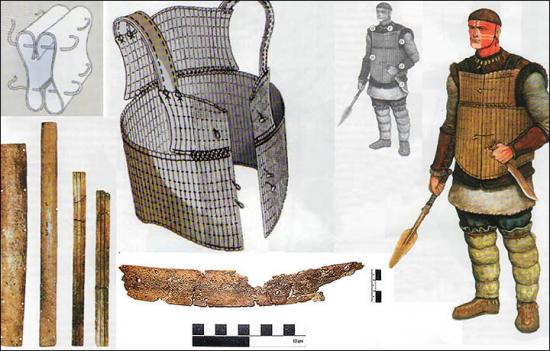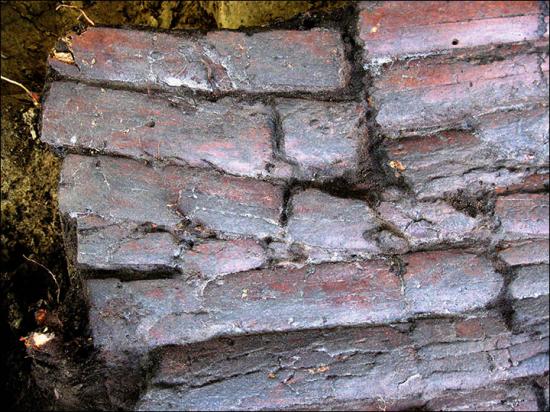Kseniya Lugovskaya
Source - http://siberiantimes.com/science/casestudy/features/warriors-3900-year-old-suit-of-bone-armour-unearthed-in-omsk/
First pictures of 'unique' Bronze Age warlord's full battle dress may be a 'war trophy'.

'It was more precious than life, because it saved life'. Picture: The Siberian Times
Archeologists are intrigued by the discovery of the complete set of well-preserved bone armour which is seen as having belonged to an 'elite' warrior. The armour was in 'perfect condition' - and in its era was 'more precious than life', say experts.
It was buried separate from its owner and no other examples of such battle dress have been found around Omsk. Analysis is expected to determine its exact age but Siberian archeologists say it dates from 3,900 to 3,500 years ago.
Nearby archeological finds are from the Krotov culture, lived in forest steppe area of Western Siberia, but this bone armour more closely resembles that of the Samus-Seyminskaya culture, which originated in the area of the Altai Mountains, some 1,000 km to the south east, and migrated to the Omsk area. The armour could have been a gift, or an exchange, or was perhaps the spoils of war.
Boris Konikov, curator of excavations, said: 'It is unique first of all because such armour was highly valued. It was more precious than life, because it saved life.
'Secondly, it was found in a settlement, and this has never happened before. There were found separate fragments in burials, like on Rostovka burial ground.'


'We hope to reconstruct an exact copy'. Pictures of the site, and drawings of what the armour looked like: Polina Volf, Yuri Gerasimov, A.Solovyev
Currently the experts say they do not know which creature's bones were used in making the armour. Found at a depth of 1.5 metres at a site of a sanatorium where there are now plans to build a five star hotel, the armour is now undergoing cleaning and restoration.
'We ourselves can not wait to see it, but at the moment it undergoing restoration, which is a is long, painstaking process. As a result we hope to reconstruct an exact copy', Boris Konikov said.
Scientist Yury Gerasimov, a research fellow of the Omsk branch of the Institute of Archaeology and Ethnography, said: 'While there is no indication that the place of discovery of the armour was a place of worship, it is very likely. Armour had great material value. There was no sense to dig it in the ground or hide it for a long time - because the fixings and the bones would be ruined.
'Such armour needs constant care. At the moment we can only fantasise - who dug it into the ground and for what purpose. Was it some ritual or sacrifice? We do not know yet.'
Gerasimov, who is engaged in the restoration, said: 'Each armour plate in the ground was divided into many small fragments, which are held only by this ground. The structure was removed from the excavation, in 'monolith' as archaeologists say - namely, intact with the piece of ground, not in separate plates, and taken to the museum.
'Now we need to clean these small fragments of bone plates, make photographs and sketches of their location, and then glue them in a full plate.'
He is certain that the armour belonged to a 'hero', an 'elite warrior who knew special methods of battle' and would have 'given good protection from weapons that were used at the time - bone and stone arrowheads, bronze knives, spears tipped with bronze, and bronze axes'.

Lots to do - Siberian archeologists have months to assemble parts of the armour together. Pictures: Maria Savilovitch, Yuri Gerasimov
The archeological site where the armour was found includes a complex of monuments belonging to different epochs. There are settlements, burial grounds, and manufacturing sites. Burials have been found here from the Early Neolithic period to the Middle Ages.
The site, beside the Irtysh River, is now owned by Popov Omsk Radio Factory which has supported the archeological research.
Konikov, who worked on the site as a researcher for many years and is now a representative of the plant, supervising the excavations, said: 'Our goal is to save the site, to research it and to promote it